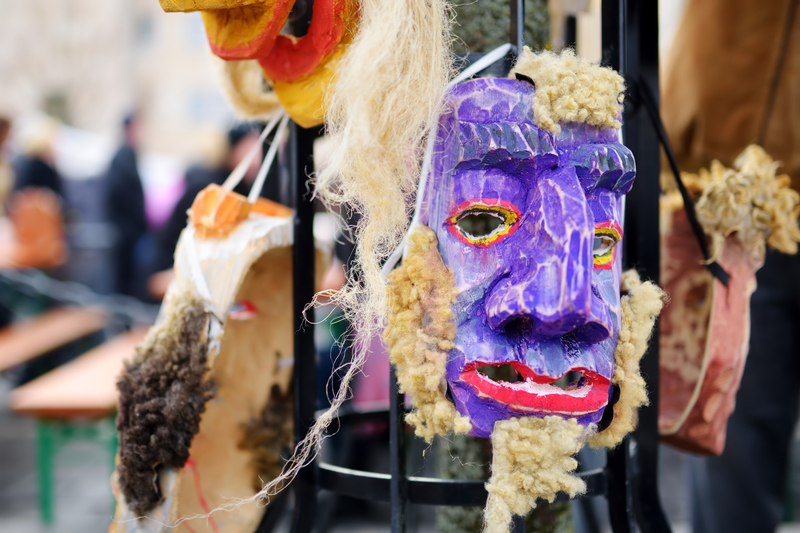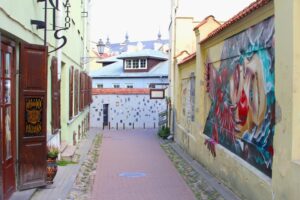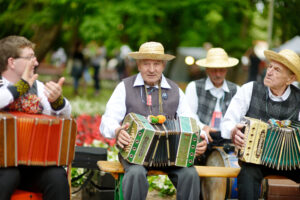Lithuania, a small Baltic country in Northern Europe, has a rich and vibrant folklore tradition that dates back centuries. These folklore traditions are an integral part of Lithuanian culture and have been passed down through generations, preserving the country’s myth and legend.
One of the most prominent figures in Lithuanian folklore is the goddess Laima. Laima is the goddess of fate and is believed to control the destiny of individuals. She is often depicted as a beautiful woman with long hair, holding a distaff and a spindle. Laima is associated with childbirth, marriage, and the overall well-being of the family. It is believed that she weaves the thread of life and determines the length and quality of one’s existence.
Another important figure in Lithuanian folklore is the god Perkūnas, also known as the Thunder God. Perkūnas is associated with thunder, lightning, and rain. He is often depicted as a strong man with a hammer or an axe, symbolizing his power over the elements. Perkūnas is believed to protect the people from evil spirits and bring fertility to the land.
Lithuanian folklore also includes a variety of mythical creatures and beings. One such creature is the Vilkacis, a werewolf-like creature that is said to roam the forests at night. It is believed that the Vilkacis can shape-shift into a wolf or a human and possesses supernatural powers. Another mythical creature is the Laumė, a female spirit that is associated with water and forests. Laumės are often depicted as beautiful women with long hair and are believed to bring good fortune to those who encounter them.
Folklore traditions in Lithuania are not limited to mythical beings and gods. They also include various rituals and customs that are performed during different seasons and celebrations. For example, during the summer solstice, Lithuanians celebrate Joninės, also known as Rasos. This celebration involves bonfires, singing, dancing, and the gathering of medicinal herbs. It is believed that during this time, the boundaries between the human and spirit worlds are blurred, allowing for communication with ancestors and spirits.
Lithuanian folklore traditions have been preserved and celebrated throughout the years, even during periods of foreign occupation and cultural suppression. Today, there are numerous festivals, museums, and cultural events dedicated to showcasing and preserving Lithuanian folklore. These traditions not only provide a glimpse into the country’s past but also serve as a source of national pride and identity for the Lithuanian people.







